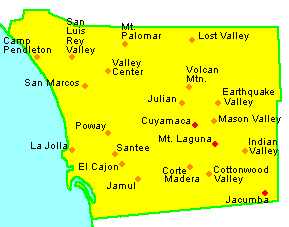Soapstone
Soapstone, steatite, or talc schist is a metamorphic rock composed primarily of the mineral talc, in varying degrees of purity. The rock is commonly pale green, white, or gray in color, has a greasy feel, and is easily scratched with a fingernail. Because of the rock’s softness and its thermal properties, steatite had several prehistoric uses, including as cooking vessels, heating stones, arrowshaft straighteners, sucking tubes, smoking pipes, ornaments, and effigies, as well as being used in powdered form for body powder, body paint, and for making ground paintings. Several of these uses were documented ethnographically (Gifford 1931; Spier 1923; Waterman 1910). The limited geological occurrences of steatite and the value of its uses make steatite a potential archaeological indicator of prehistoric patterns of exchange or nonlocal procurement.
Santa Catalina Island was apparently a major center for prehistoric steatite extraction and manufacturing in southern California (Heizer and Treganza 1972; Kroeber 1925:629-630). Another source that was extensively used prehistorically was the Pelona Schist, located north of Los Angeles (Rosenthal and Williams 1992).  Within San Diego County, steatite sources have been identified on Stonewall Peak (SDI-9039, SDI-9040) in Cuyamaca Rancho State Park, in Jacumba Valley (SDI-7790), and at Boiling Springs (SDI-8538) on Mount Laguna (Graham 1981; Heizer and Treganza 1944; Parkman 1983; Polk 1972; Treganza 1942). There are also reported to be quarries in the Rincon and Valley Center areas (O’Neil 1983:246). However, it has also been suggested that the San Diego sources are not true soapstone (i.e., composed predominantly of talc), but rather represent schist composed primarily of other soft minerals (Anna Noah, personal communication 2012).
Within San Diego County, steatite sources have been identified on Stonewall Peak (SDI-9039, SDI-9040) in Cuyamaca Rancho State Park, in Jacumba Valley (SDI-7790), and at Boiling Springs (SDI-8538) on Mount Laguna (Graham 1981; Heizer and Treganza 1944; Parkman 1983; Polk 1972; Treganza 1942). There are also reported to be quarries in the Rincon and Valley Center areas (O’Neil 1983:246). However, it has also been suggested that the San Diego sources are not true soapstone (i.e., composed predominantly of talc), but rather represent schist composed primarily of other soft minerals (Anna Noah, personal communication 2012).
D. L. True reported evidence for an extensive steatite industry in Cuyamaca Rancho State Park, including worked fragments and chunks of unworked material as well as a variety of finished artifacts. He suggested the presence of a steatite industry as one of the traits that distinguished the late prehistoric Cuyamaca (i.e., Kumeyaay) complex from the San Luis Rey (i.e., Luiseño) complex. However, he noted that the contrast might be attributable to the Kumeyaay proximity to the steatite source rather than to cultural differences.
It is uncertain to what extent archaeological specimens of steatite can be matched to different source areas. Studying two major steatite sources in Los Angeles County, Jane Rosenthal and Stephen L. Williams (1992) suggested that the materials could be distinguished macroscopically, on the basis of their mineralogy and texture. John Eddy (2009) reported on promising preliminary results in the use of x-ray fluorescence chemical analysis to distinguish steatite, both between the major regions of origin (Santa Catalina Island, Sierra Pelona, and eastern San Diego County) and among the more specific quarries in the latter region.
PROSPECTS
Future geological and archaeological studies may be able to assess the feasibility and practicality of matching archaeological specimens of steatite with their source areas. Field investigations may be able to locate additional local steatite quarries. Analysis of finished archaeological specimens and of the tools and residues at manufacturing locations may clarify the techniques that were involved in producing steatite artifacts. Analysis of sourced archaeological specimens may be able to identify patterns in the uses to which steatite from particular sources was put and the ways it was distributed during various periods of prehistory.
| Area | Steatite Artifacts | References |
| Camp Pendleton | heating stone, pipe | Ezell 1975; Strudwick 1998 |
| San Luis Rey Valley | pipe or bead fragment, pendant, effigy | Koerper and Labbé 1987; Meighan 1954; True 1966 |
| Mt. Palomar | heating stone, arrowshaft straightener | Iovin 1963; True 1966; True et al. 1974; Waugh 1986 |
| Lost Valley | heating stone, arrowshaft straightener, pipe | Ekizian 1999; Fleming 1999 |
| Valley Center | heating stones | Warren et al. 1961 |
| San Marcos | sucking tube, bead | O’Neil 1983 |
| La Jolla | doughnut stone | Moriarty et al. 1959; Shumway et al. 1961 |
| Poway | bowls, heating stones, pipes, pendant | Dominici 1985; Parkman 1985; True 1966 |
| Santee | manufacturing debris | McDonald et al. 1994 |
| El Cajon | pendant | Cardenas and Van Wormer 1984 |
| Jamul | heating stone | McGowan 1982 |
| Volcan Mountain | bowl, heating stones | Parkman 1985 |
| Julian | bowls, heating stones, sucking tubes, manufacturing debris | Fritz et al. 1977; Parkman 1983, 1985; Polk 1972 |
| Earthquake Valley | heating stones | Parkman 1985 |
| Mason Valley | arrowshaft straighteners, effigy | Musser 1980; True 1966, 1970 |
| Cuyamaca | heating stone fragments, arrowshaft straighteners, beads, pendants, effigies, manufacturing debris | Gamble 2004; Gross and Sampson 1990; Guerrero 2004; True 1966, 1970 |
| Indian Valley | arrowshaft straightener | Wallace 1962b |
| Cottonwood Valley | bead, powder stone | May 1975; Polk 1972 |
| Corte Madera | arrowshaft straighteners, ornaments | Phillips and Carrico 1986 |
| Jacumba | heating stones | Parkman 1985; Treganza 1942 |